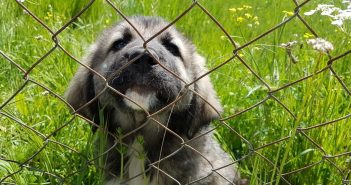They look like wolves but behave like silly toddlers. Who are we talking about? Siberian Huskies of course!
These dogs, turned Internet sensation, never fail to entertain. They’re sweet, friendly, playful, and always up for a good run. But, did you know that there’s more to Siberian Huskies than what meets the eye? Sure, they look majestic (if you’re a fan of wolves like I am) and a bit scary (if you haven’t watched The Jungle Book and think that wolves are scary), but they’re also a but silly and they love playing around.
Do you want to know more about these precious creatures? Then keep on reading to discover seven fun facts about the Siberian Husky dog breed!
1. They enjoy running
And by “enjoy,” I mean that Siberian Huskies are crazy about it, just like your neighbor’s hyperactive child who probably forgot to take his ADHD meds (I would know, I’m the same).
Siberian Huskies were born to run in the wild, to take over nature (or your garden) and to be the perfect sled dogs! They were bred to endure harsh winters, and they definitely did so. So, if you happen to be thinking about adopting a Siberian Husky, remember this: your dog will need to run and exercise a lot, so be sure to have a lot of space for him to do so!
2. They’re often blue-eyed
No need to go all the way to some Scandinavian country to meet beautiful blue-eyed creatures. All you need to do is to adopt a Siberian Husky! These majestic dogs usually have one or two pale blue eyes, which is a result of a genetic mutation. Since Siberian Huskies were first bred in one of the coldest areas in the world, their eyes were naturally blue and pale.
3. They are great family dogs
As I already stated before, Siberian Huskies are friendly, playful animals, which makes them the perfect family dogs! They are pack-oriented and only thrive in heavy family units. They will consider you and your family their pack, and will do anything, anything, to protect you, no matter what. They are loyal to their humans and will die for them.
Sure, Siberian Huskies are not the best guard dogs (they are way too friendly for that), but they get perfectly along with humans, especially children and elderly people. So, if you live in a cold climate, have good space for your dog to run around, and a family that wants to add a dog to their ranks, you should consider adopting a Siberian Husky. You will definitely not regret it!
4. They have a crazy metabolism
Thanks to their unusual metabolism, Siberian Huskies can go hours without food, and yet, not be tired at all. They’re a bit like Alaska’s own camels. Huskies can actually regulate their metabolism to go a long time without food, and without tapping into their energy stores, such as fat or glycogen.
Pretty fancy for a dog, right?
I recently reviewed the 5 best dog foods for huskies based on my love and knowledge of the breed as well as their typical eating habits (and food boredom issues). If you have a husky, you should totally check that out. 5 Best Dog Foods for Huskies.
5. They are, actually, related to wolves
Yes, and not just in their looks. Siberian Huskies share a decent part of their DNA with the grey wolf, even though they have evolved differently, and are actually domesticated animals. But a thousand years ago, they were just as wild as their scarier (if I might say) cousins.
6. They are difficult to train
Sure, the Siberian Husky is an extremely intelligent animal, but, he’s not as eager to please his human as other dogs are. Siberian Huskies are known for being stubborn animals who only do what pleases them. This makes them challenging to train even to the most experienced dog owner.
So, if you’re the proud parent of a Siberian Husky but can’t seem to be able to train him well, seek the help of a professional, it will make it easier for both of you.
7. They are escape artists
And it doesn’t matter if they are purebred of mixed with another breed (ever heard of a Gerberian Shepsky)?
Huskies are famous for being devilish escape artists. They slip out of leashes, dig under your house’s fence, and try just about every way to go running in the wild.
Perhaps that’s why so many of them are named Houdini . . . or should be!




